Object of the Week: David Hockney’s Alphabet
-
Graham Foster
- 2nd November 2017
-
category
- Object of the Week
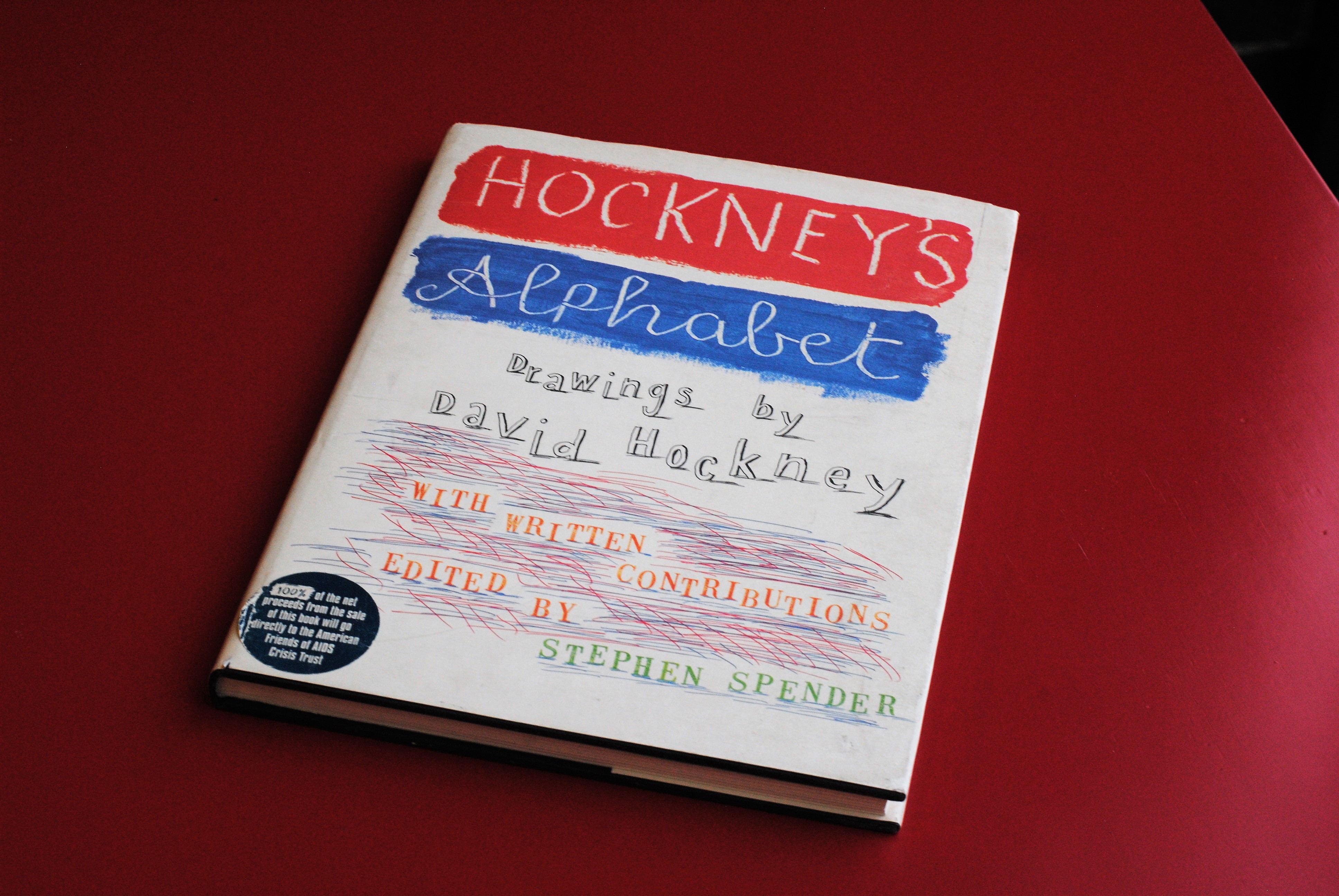
Anthony Burgess often collaborated with visual artists, such as Joe Tilson (for the art book, Will and Testament) and Fulvio Testa, who illustrated two books for children, A Long Trip to Teatime and The Land Where the Ice Cream Grows. Another collaboration took place in 1991, when he was invited by Stephen Spender and David Hockney to contribute to the book Hockney’s Alphabet.
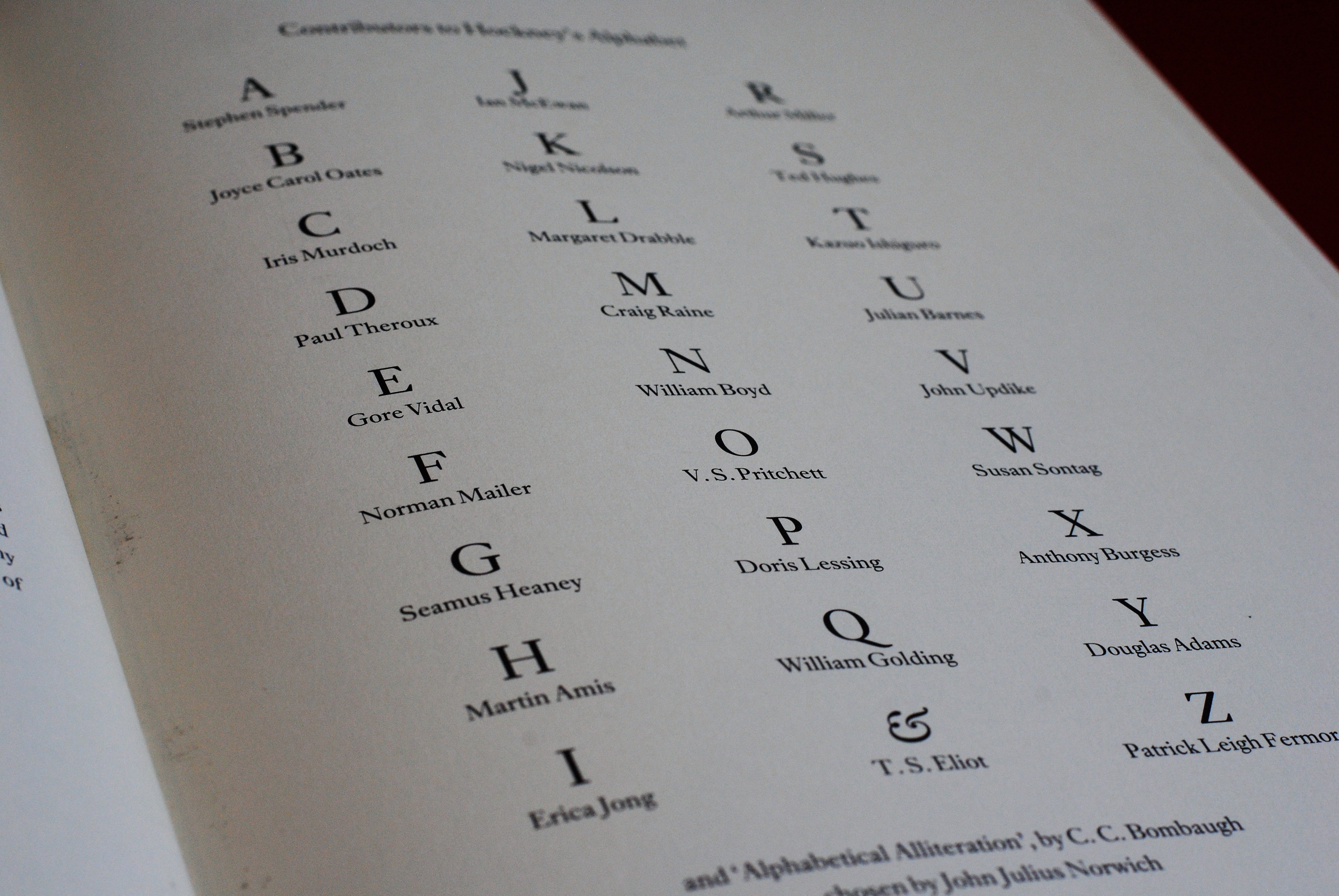
The book pairs Hockney’s artworks, each representing a letter of the alphabet, with a piece of writing by notable authors from Britain, Ireland and the United States. The project was conceived to raise money for the AIDS Crisis Trust, and the book includes works by such authors as Iris Murdoch, Gore Vidal, Margaret Drabble, William Boyd and Erica Jong. The list of contributors contains five Nobel Laureates: Doris Lessing, T.S. Eliot, Seamus Heaney, William Golding, and Kazuo Ishiguro. The texts are a combination of essays, poems, and prose — an amusing exception being Norman Mailer’s letter, in which he refuses to participate in the project.
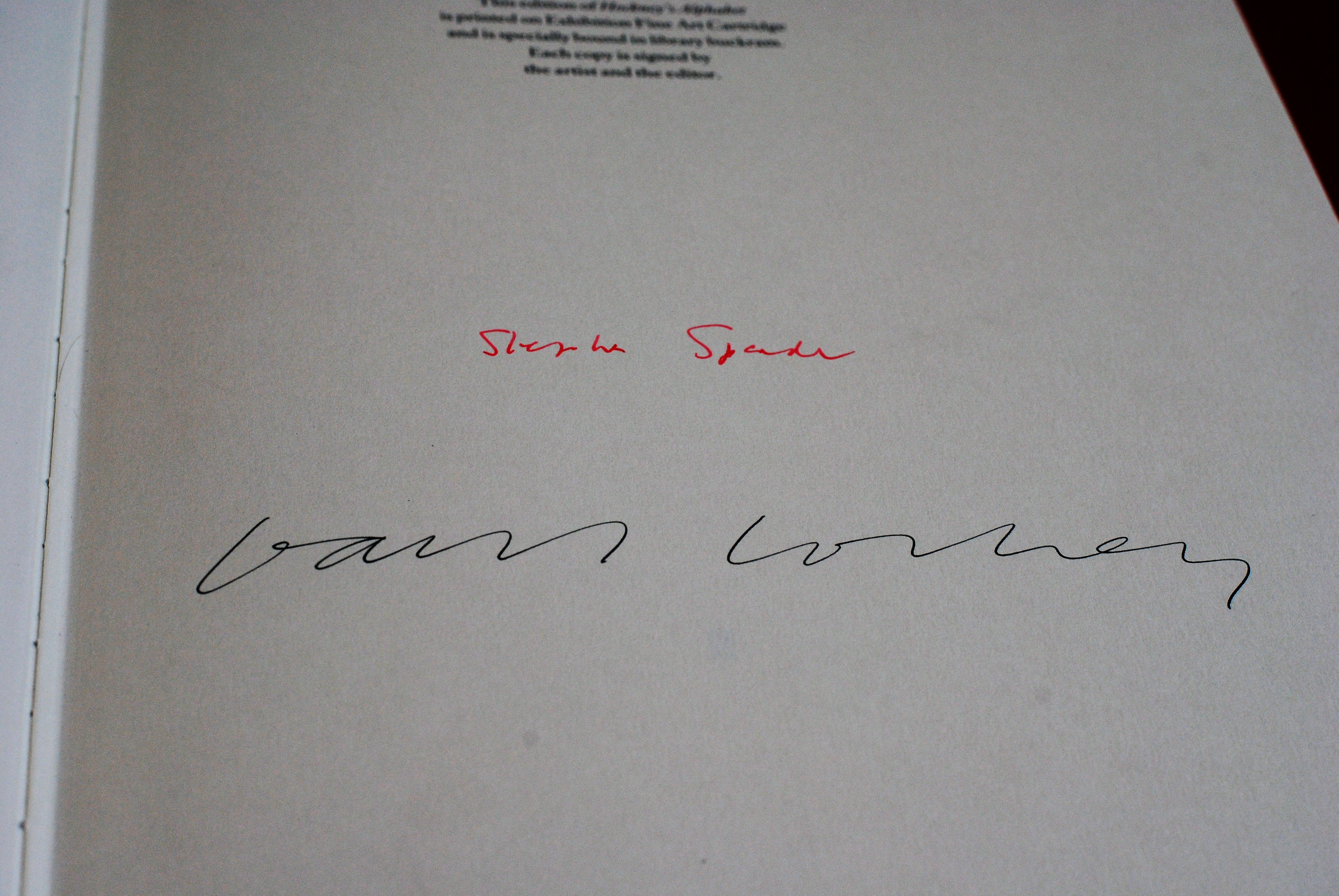
The edition of the book in the library at the Burgess Foundation is not the regular version which was available in bookshops. Burgess’s contributor’s copy has been signed by both David Hockney and Stephen Spender, and it is bound in library buckram.
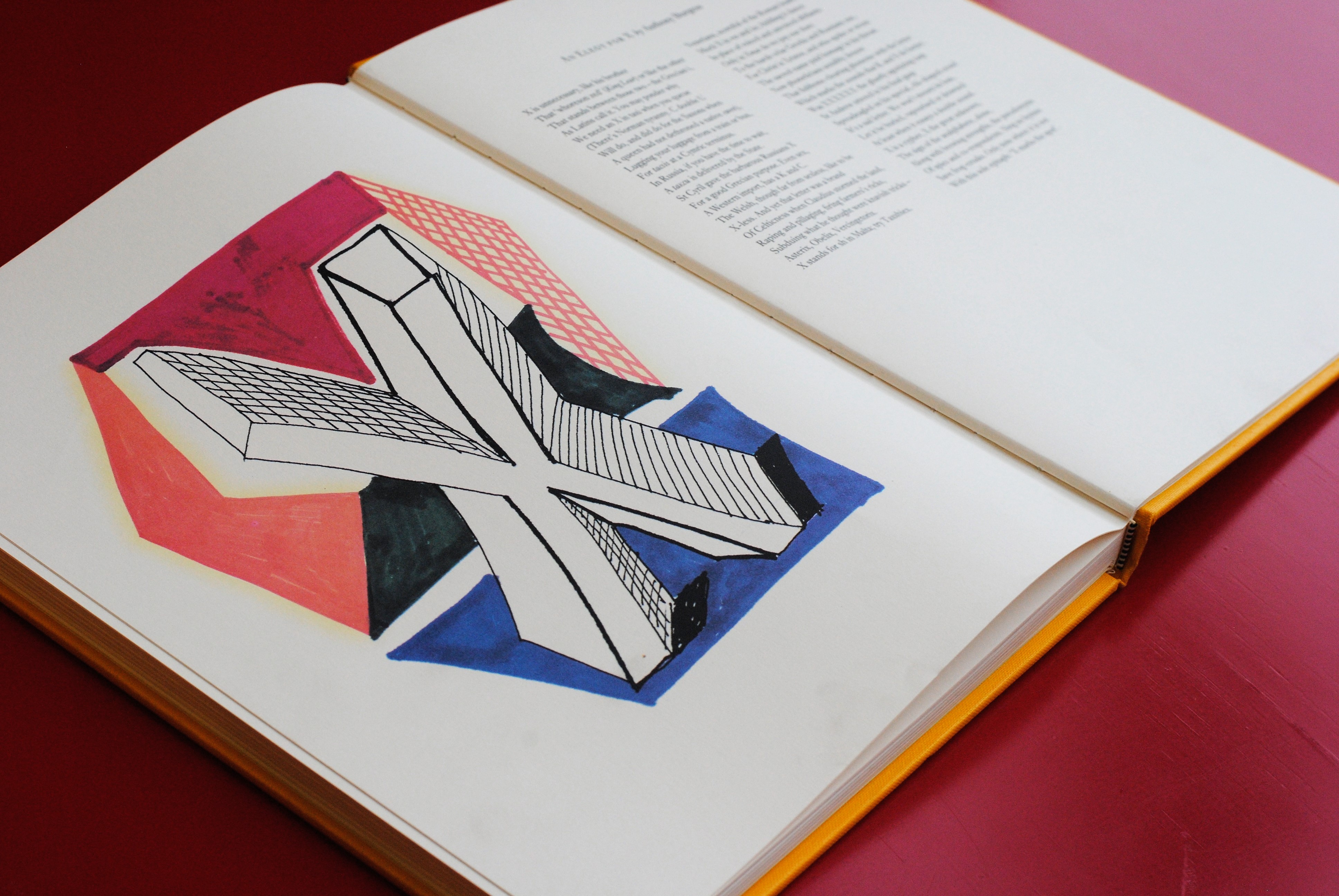
Burgess contributed an original poem titled ‘An Elegy for X’, which combines his vast knowledge of language usage, various cultures, his flair for unusual vocabulary, and his sense of humour. He examines the use of the letter X through Welsh, Anglo-Saxon, Greek, Italian, Norman, Russian and Gaelic, before dwelling on its various uses, including in sex, crucifixion, and Christmas. The poem concludes:
It is a sad letter. We won’t mourn its loss,
Let it be buried, vapourised or drowned
At least when it essays a double sound.
X is a cypher, X the great unknown,
The sign of analphabete, alone,
Along with brewing strengths, the pseudonyms
Of spies and co-respondents. Sing no hymns
Save frog-croaks. Only note where it is not
With this sole epitaph: ‘X marks the spot.’
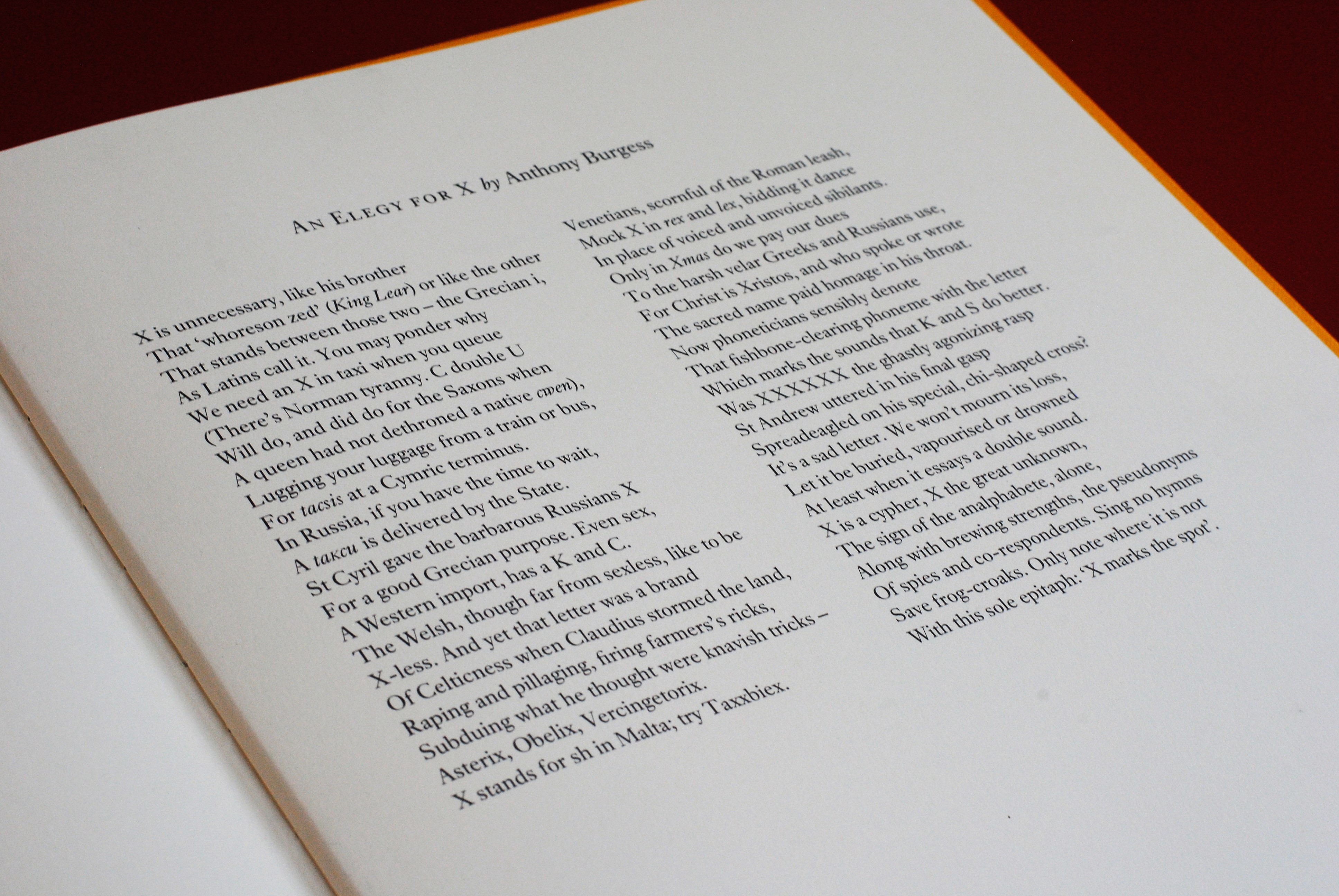
While this book reveals a charitable side to Burgess — he donated his poem without taking a fee — it also shows how he was viewed by his peers towards the end of his life. The list of authors included in this book represents a canon of twentieth-century literature in which Burgess played a prominent role. Evidence from the Foundation’s archive shows that he also corresponded with, and wrote about, many of the other authors included in the list.
Eight of the writers included in Hockney’s Alphabet are featured in Burgess’s survey of twentieth century literature in English, Ninety-Nine Novels (1984). These are Norman Mailer, Doris Lessing, William Golding, Iris Murdoch, John Updike, Gore Vidal, Paul Theroux and Erica Jong. Burgess enjoyed personal friendships with some of these authors, including Vidal and Jong. He wrote an affectionate obituary for William Golding in 1993, in which he said: ‘He wrote beautifully, but he did not write enough’.
Hockney’s Alphabet is just one example of Burgess’s preoccupation with collaborative writing, and throughout his career he worked with other writers, artists, musicians, and composers to create new pieces of work. He collaborated with the photographer David Robinson to write his 1976 novel Beard’s Roman Women; with composer Stanley Silverman on Oedipus the King and The MND Show; with Michael J. Lewis on a Grammy-nominated Broadway musical, Cyrano; and he contributed introductions to books on subjects including Irish short stories, Shakespeare, food in the works of James Joyce, and paparazzi photography. These collaborations demonstrate that Burgess’s engagement with the work of his contemporaries went far beyond reviewing. He was an active participant in the cultural landscape of the late twentieth century.



